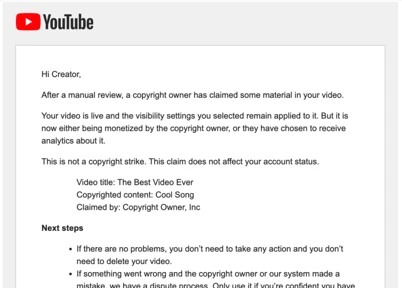Vlogging, or video blogging, has become an increasingly popular way for individuals to share their experiences, thoughts, and ideas with the world. With the rise of platforms like YouTube, Vimeo, and TikTok, it has never been easier to create and share video content with a global audience.
However, with this increased accessibility comes a new set of challenges, including the issue of copyright. Copyright infringement can lead to serious consequences, including legal action, fines, and even the removal of a vlogger’s channel.
In this article, we will explore how vloggers can tackle copyright issues in order to protect themselves and their content.
Understanding Copyright Law
Before we dive into the specifics of how to tackle copyright issues in vlogging, it is important to have a basic understanding of copyright law. Copyright is a form of legal protection that gives creators of original works exclusive rights to reproduce, distribute, and display their work.
In the context of vlogging, this means that if a vlogger uses copyrighted material (such as music, images, or video clips) without permission, they may be infringing on the copyright holder’s rights.
Obtaining Permission
The most straightforward way to avoid copyright issues in vlogging is to obtain permission from the copyright holder before using their material. This can be done through a variety of methods, including:
- Contacting the copyright holder directly and requesting permission
- Using a licensing service, such as a music library or stock photo website, to obtain a license to use the material
- Using creative commons licensed material, which can be used freely with proper attribution
Proper Attribution
Even if you have obtained permission to use copyrighted material, it is important to properly attribute the material to the copyright holder. This can typically be done by including a credit in the video description or on-screen during the video.
Fair Use
In some cases, the use of copyrighted material may be considered fair use. Fair use is a legal doctrine that allows for the limited use of copyrighted material without permission under certain circumstances, such as for the purpose of criticism, commentary, news reporting, teaching, scholarship, or research.
However, it is important to note that the fair use doctrine is subjective and can be difficult to prove. It is always best to err on the side of caution and obtain permission when possible.
Using Copyright-Free Material

Another way to avoid copyright issues in vlogging is to use copyright-free material. This can include:
- Original material created by the vlogger
- Material that is in the public domain
- Material that is licensed under creative commons
Public Domain
Material that is in the public domain is no longer protected by copyright and can be used freely. This can include works whose copyright has expired, or works that were never eligible for copyright protection in the first place.
Creative Commons
Creative commons is a nonprofit organization that provides free, standardized licenses that creators can use to allow others to use their work under certain conditions. These licenses typically require attribution and may prohibit commercial use or require that any derivative works be shared under the same license.
Using Copyright Protection Tools
Many vlogging platforms, such as YouTube, offer copyright protection tools that can help vloggers avoid copyright issues. These tools can include:
- Content ID systems, which automatically scan videos for copyrighted material and allow copyright holders to claim revenue from any ads displayed on the video
- Copyright matching tools, which allow vloggers to check their videos against a database of copyrighted material and make any necessary changes before publishing
Dispute Resolution
If a vlogger receives a copyright claim or strike, they can dispute the claim through the platform’s dispute resolution process. This typically involves providing evidence that the use of the copyrighted material was fair use or that the vlogger had permission to use the material.
Conclusion
Copyright issues in vlogging can be complex, but by understanding copyright law, obtaining permission, using copyright-free material, and utilizing copyright protection tools, vloggers can protect themselves and their content. It is important to always err on the side of caution and seek legal advice if unsure.
Remember that copyright infringement can lead to serious consequences, including legal action, fines, and even the removal of a vlogger’s channel. By taking the necessary steps to avoid copyright issues, vloggers can focus on creating and sharing high-quality content with their audience.